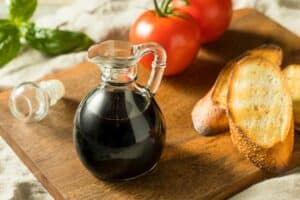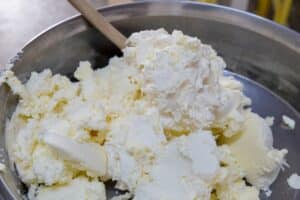Yogurt is a staple food in many cultures, originating from countries in Western Asia and the Middle East.
However, what are some yogurt substitutes if you don’t have any for the recipe you want to tackle? Sour cream, cottage cheese and butter milk are the top 3 options.
Where is Yogurt From?
Yogurt originated from Nomadic herdsmen, who would carry milk in pouches during their travels. Since the milk was close to their body heat, the enzymes would ferment, creating an edible food that lasted longer since it combined with the healthy bacteria.
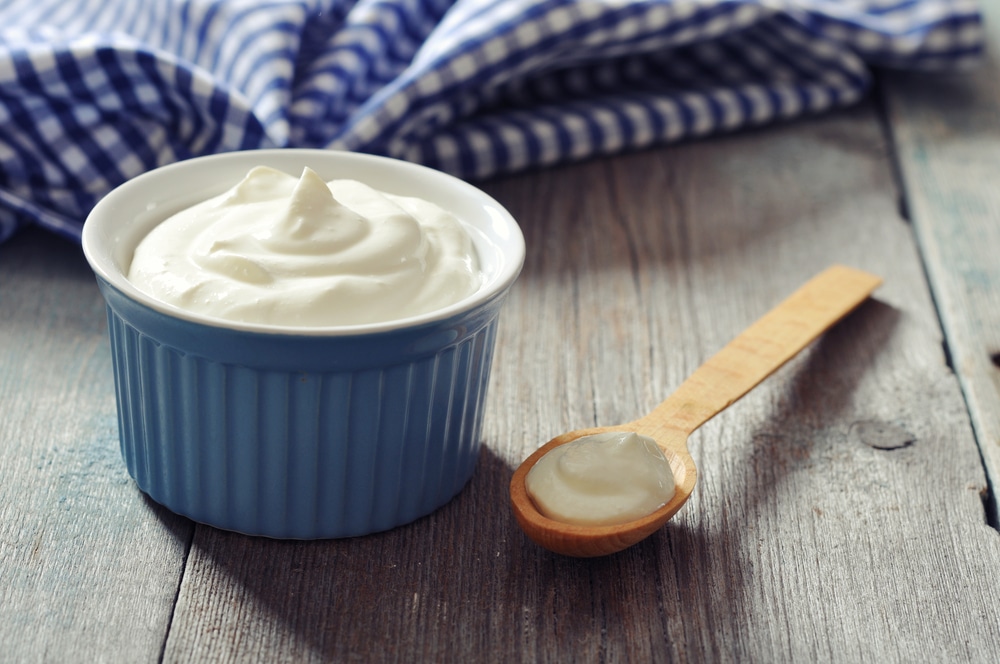
Yogurt can keep for several hours at room temperature, and the sugar in the milk transforms into lactic acid, creating a thick and tart mixture.
Yogurt has been around since 6000 B.C. Nowadays, you can get variations that are plain, sweetened, or fruity. Yogurt is a good source of protein, calcium, phosphorus, and B vitamins. People with lactose intolerance can digest yogurt better than milk seeing that it has a lower concentration.
Keep reading to discover more about some plain yogurt substitutes that can get the job done in a pinch.
1. Sour Cream
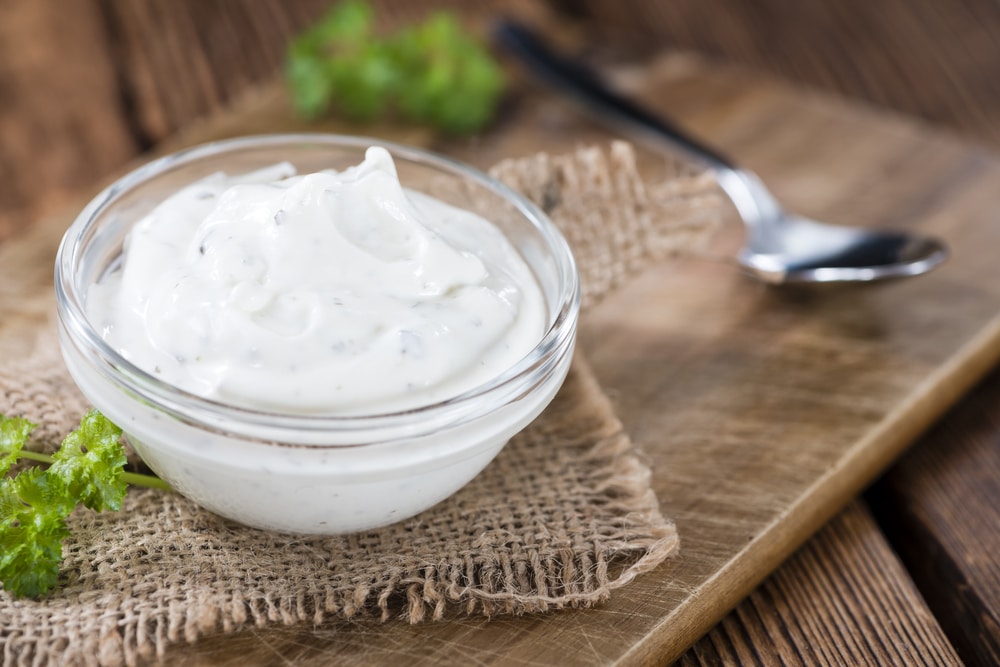
Sour cream is created when lactic acid-producing bacteria are added to dairy cream to form a tart and thick mixture that’s popular in Eastern and Central European cuisines. Sour cream is essential in kitchens everywhere for quick dips and to thicken sauces with a rich and creamy bite or to make a creamy frosting.
People garnish their potatoes or soups with sour cream before serving, but its consistency and flavor allow it to tenderize baked goods while giving a tangy sensation.
Sour cream is available in regular, light (reduced fat), fat-free, or dairy-free options. It’s a high-fat product usually, so adjusting the fat content changes your final product. Sour cream should be stirred or drained before using as a garnish or condiment.
Be cautious if you’re using it for cooking since it curdles once exposed to high heat. Yet, it does well in baked goods, such as biscuits, pancakes, cakes, muffins, cookies, or scones.
Sour cream is accessible, available everywhere, and inexpensive, making it a top contender to replace yogurt. It can be frozen for up to six months, but the texture changes. After thawing, it’s best used for cooking at that point.
2. Buttermilk
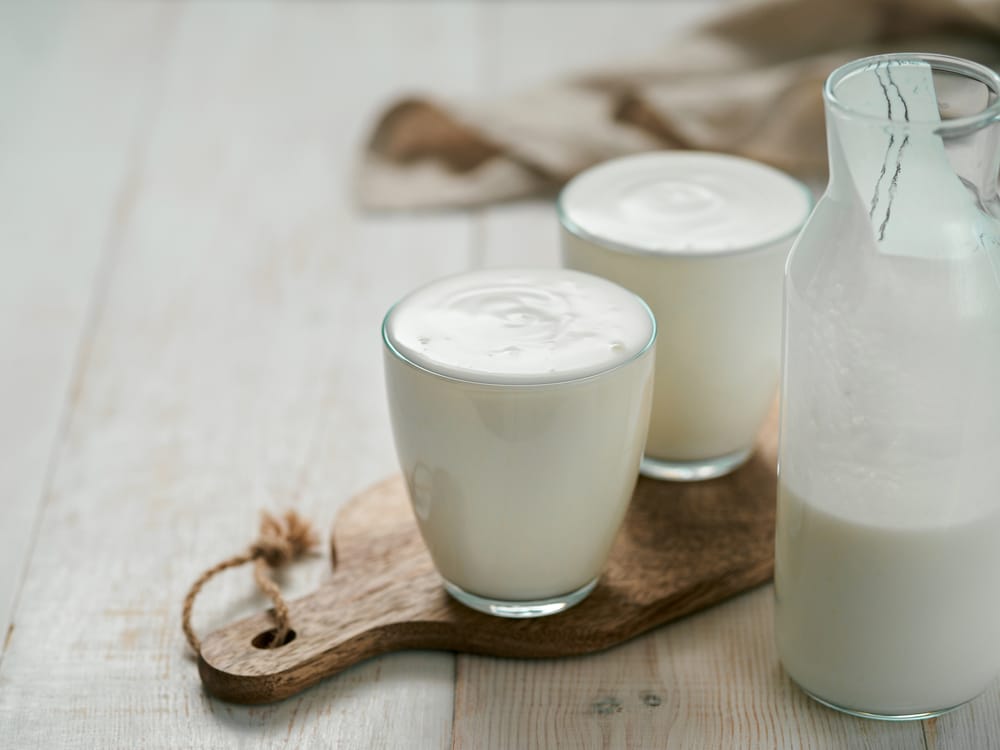
Contrary to its name, buttermilk has no butter and is lower in fat than regular milk. Buttermilk is versatile and is created from the process of churning butter. It has a tangy flavor and creamy richness that can be used anywhere from savory to sweet.
Its acid powers leavening agents, such as baking powder, in baked goods and has a high calcium content. You can make your own by adding one tablespoon of lemon juice or white vinegar to the same amount of regular milk.
Making buttermilk is similar to yogurt, where bacteria is added to pasteurized low-fat or skim milk and then ferments for 12-14 hours at a low temperature. Salt and stabilizers are added.
Old-fashioned buttermilk is slightly sweet and created after butter is churned, converting the milk sugars into lactic acid.
Buttermilk is a desirable counterpart for yogurt since it provides a tangy flavor to your pastries. Additionally, buttermilk has a longer storage time than its normal counterparts due to its acidity. The milk is thicker but not as heavy as cream, and the sourness is a great addition to pancakes or biscuits.
Not only that, buttermilk gives baked goods a rise and crumble and can be used to tenderize meats, so it’s often used in recipes for fried chicken.
Salad dressings, dips, pies, and cornbread are just a few other possibilities of what you can make with buttermilk. Remember that it needs to remain well chilled and curdles if heated too quickly.
A final perk about buttermilk is that it’s available at nearly any supermarket and is safe to use two weeks after its sell-by date.
3. Cottage Cheese
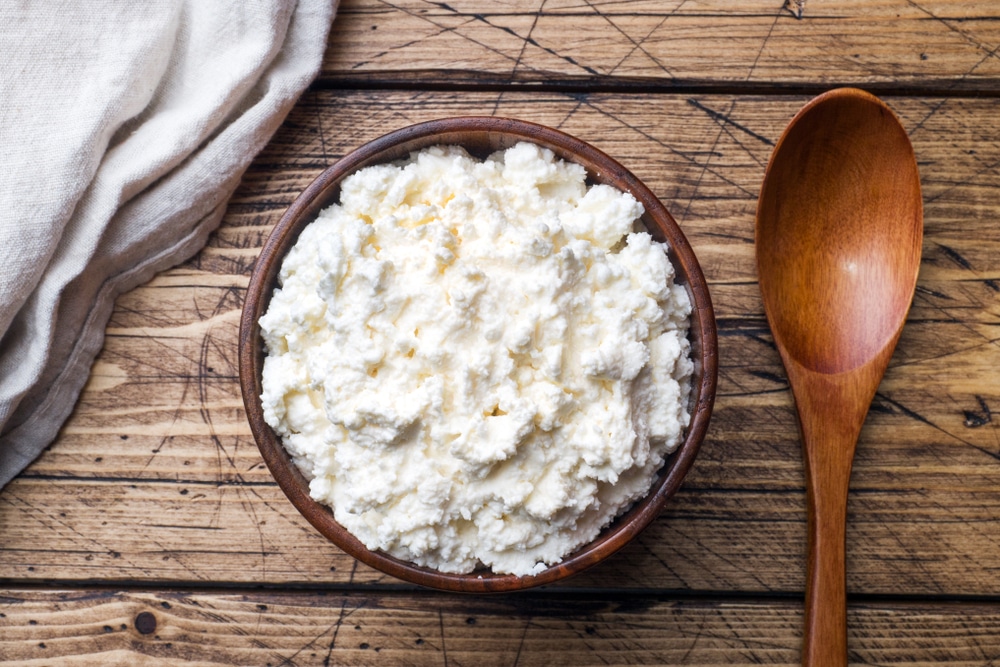
Cottage cheese is fresh with small curds and a slightly savory taste. It’s creamy and can come in medium or large curd selections too.
Cottage cheese is made by acidifying milk and separating it from the whey protein (similar to Greek yogurt). Then, the curds are rinsed, and salt is added. It’s supposed that immigrants brought fresh cheesemaking to America, and cottage cheese was one of the first cheeses made in the U.S.
Nonetheless, this option has between 40-70% less calcium (since it’s removed when drained). Despite that, cottage cheese is a good source of protein and riboflavin, matching yogurt’s health benefits.
Babies often consume it due to its high nutritional value. It’s delicious, affordable, and can be used in pancakes, biscuits, cheesecakes, or even ice cream.
4. Cream Cheese
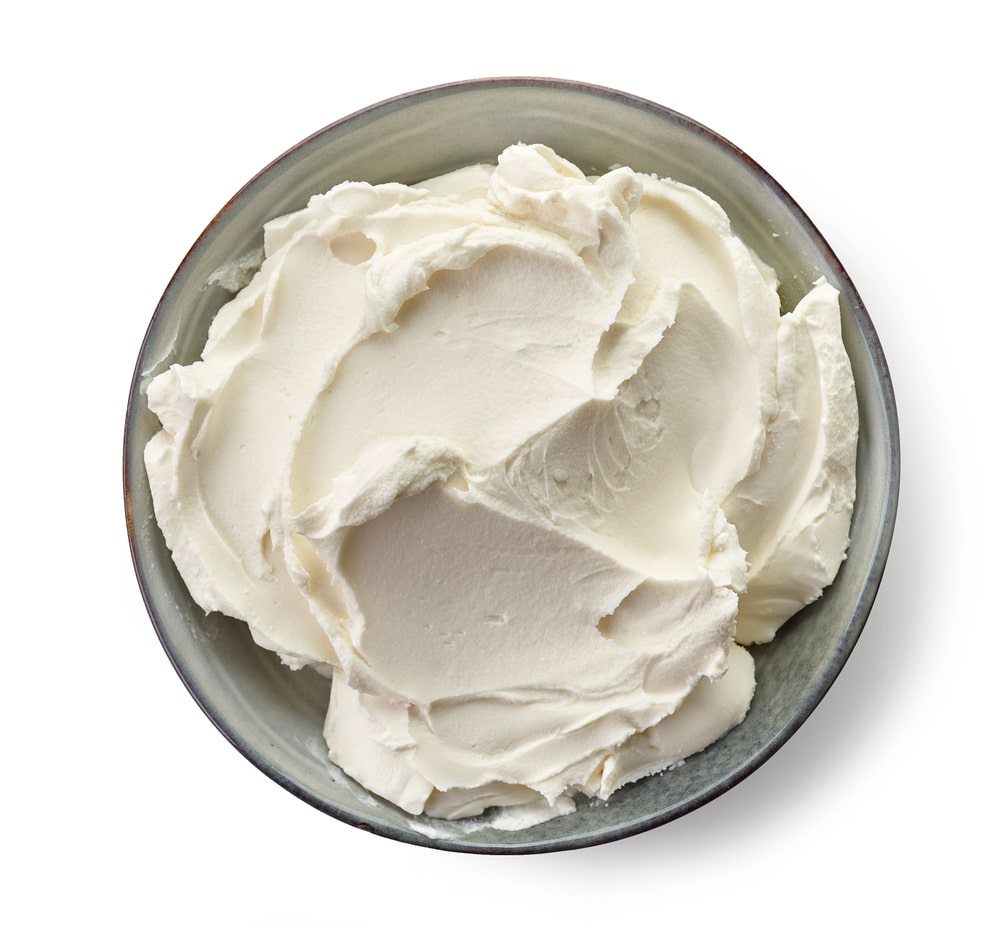
Cream cheese is fresh, soft, and mild-tasting with a sweet tang that’s commonly spread on bagels. It’s a combination of cow’s milk and cream, with a high-fat content of about 33%.
It’s rich, smooth, and milky with plenty of calories. Cream cheese is a common element in baking, coming in low-fat and nonfat varieties. Its neutral flavor and fresh, creamy texture make it wonderful to eat on its own and a good replacement for yogurt.
Some companies whip cream cheese with air to make it more easily spreadable, adding herbs, veggies, fruit, or even smoked salmon.
Cream cheese is used in various ways, adding richness to frosting on a carrot or red velvet cake. It also makes pastries light and fluffy. Cream cheese is perfect for no-bake cheesecakes for those who don’t want the hassle of turning on the oven.
Cream cheese adds structure and flavor to savory dishes as well, not just desserts, such as stuffed mushrooms or pie dough. However, cream cheese has a short shelf life once opened.
Keep cream cheese refrigerated, or you can freeze it upon purchase. It is widely available and affordable.
5. Mayonnaise
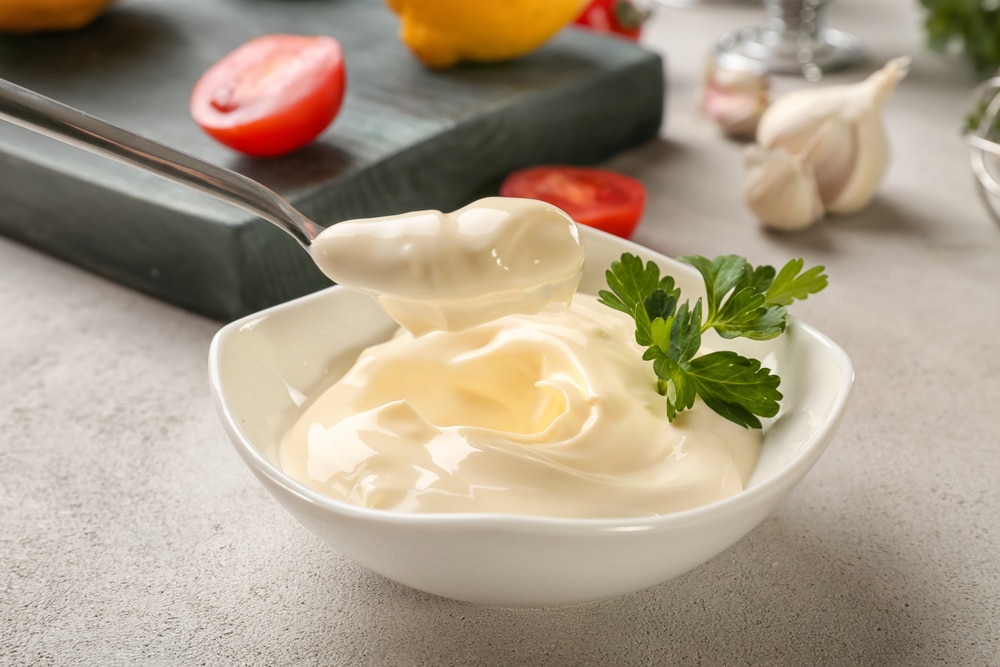
Surprisingly, mayonnaise can replace yogurt due to its creaminess. Mayonnaise is made from an emulsion between an acid and protein.
Normally, vinegar (or lemon juice) and egg yolks are used. Mayo is referred to as a dressing, and while it can be used in salad dressings, sandwiches are more often the recognizable pairing for this savory condiment. It also goes well with tuna, crab, or pasta salad.
Seeing that mayo is created through two ingredients that don’t get along well, mayo must be carefully mixed. One of the ingredients is gradually added to the other as you mix steadily. Funnily enough, mayo was created in the 18th century when a chef ran out of cream, substituting oil instead, and voila, mayo was born.
In the modern era, it’s produced commercially and in every grocery store, despite professional cooks preferring to make their own with fresh eggs, reducing the risk of salmonella. Fresh mayo needs to be consumed within three days and kept refrigerated, whereas store-bought can last up to six months after opening.
Related Questions
In this section, we’ll answer some of the common inquiries about substituting yogurt.
Can I substitute yogurt for milk in baking?
Milk is important when baking since it softens baked goods and provides moisture, helping the product brown. Yogurt is thicker, so you can substitute it for milk, but add some water until it resembles the same consistency.
Then, you can substitute it in a one-to-one ratio. To offset the undesirable tangy flavor, you can add a touch of vanilla. Yogurt will enhance the pastry, similar to buttermilk.
Can I use milk instead of yogurt in a smoothie?
Smoothies are great for starting the day or as an afternoon snack, and you can substitute milk instead of yogurt in a smoothie.
To make a smoothie, you should use two cups of a liquid base, whether that’s milk, a dairy-free alternative, yogurt, fruit juice, or water. Remember to add the liquid before the fruit to avoid damage to the blender.
The best part about smoothies is you can create whatever flavor preference you want through the liquid, fruit, or veggie portions and any other spices or ingredients, such as cocoa powder, vanilla, nuts, or oats!
What do vegans use instead of yogurt?
Vegans can use a buttermilk alternative, which is simply combining two to three tablespoons of lemon juice or vinegar, plus plain or unsweetened alternative milk, such as soy, rice, or oat. They can also opt for coconut cream instead of yogurt, but this option is higher in fat.
Pureed tofu works about the same for heartier dishes but lacks the tanginess in yogurt. Of course, store-bought dairy-free yogurt made from soy, coconut, almond, or cashew achieves the same with a healthy alternative.

